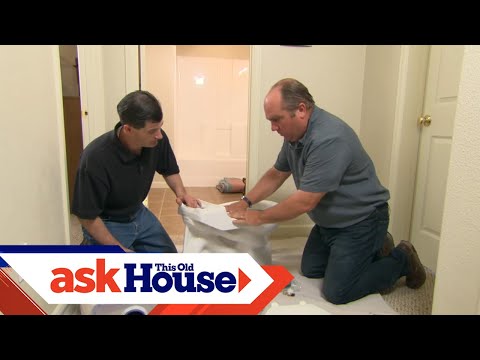Do you feel like you are paying too much for hot water service?
There are many options available to help save you money on electric or gas bills, including choosing the right plan in the off-peak vs continuous tariff debate. The best option may be to replace your existing hot water system with a new, more efficient one. If you’re looking at trying to save money by taking advantage of off-peak rates for your hot water service, it may be worth exploring options around replacing your hot water system.
Be sure to look through the many great options available to you as well as exploring off-peak rate options.
Differences between electric hot water systems on off-peak rate & those on continuous tariff
There are certain differences/advantages and disadvantages to having your electric hot water system on off-peak tariff OR having it on a continuous tariff.
This article aims to help you understand the differences between how both tariffs operate and the practical differences to the householder.
Electric Hot Water Systems – Off-peak rate
Generally speaking, electric hot water systems need to work according to minimum energy requirements and standards which are in direct relation to the hot water unit’s loss of heat. With the off-peak rate, you need a larger hot water tank (starting at a minimum capacity of 250 litres and upwards, the 250 litre tank being for a household of 3 to 4 people on average).
This need for a larger tank is due to the extent of loss of heat from the tank, and because the hot water lost cannot be replaced until the next nightly cycle of reheating the tank.
So, with off-peak, you need a bigger tank which can handle your daily hot water necessities. Otherwise, you may run out of hot water too soon. The off-peak heating system kicks in at around mid-night (off-peak hours). This is when your water heater will go through a reheating cycle.
A tank can take between 2 to 4 hours to fully reheat. The off-peak’s popularity lies in its “cost-effectiveness”, which will be talked about later on in this article. In terms of the overnight heating of your tank, it is the bottom element within your hot water system that gets activated at night, during the off-peak electricity times mentioned above. The bottom element, therefore, does the majority of the heating of your tank. This heating process is activated from within the bottom of the hot water system (where the cold water enters the tank via an inlet pipe situated towards the lower part of the water heater).
With regard to accessing off-peak electricity, it will depend on the type of meter you have at your home. As the type of meter will determine the way in which you will access your off-peak electricity. You may phone your energy retailer in order to establish the type of meter you have at home.
You only need to provide them with your address details and they should be able to inform you of the type of meter at your premises.
Electric Hot Water Systems – Continuous tariff
When connecting to a continuous tariff supply, then your electricity is available throughout the whole day (24 hours per day). The advantage of going on to a continuous tariff is that you would hardly ever run out of hot water during the course of the entire day.
However, in the event that you were to run out of hot water, it would not be too long before your hot water would be returned. Another advantage is that the tank which runs on a continuous tariff can be of a smaller size (capacity) than the tank supplied by the off-peak rate. Also, the tank’s heat loss on continuous tariff can be replaced reasonably quickly, in contrast to a tank on off-peak. With regard to water heaters containing dual elements, in case you were to run low on hot water, then the top element within your water heater comes into play. This top element would be activated when the top section within the tank is cold. In this instance, the top element would only heat a small quantity of water towards the top of the tank. It is this top element which is connected to the continuous tariff. Of course, this would only be possible when you have a hot water system containing this twin-element feature, which simply gives the tank that extra bit of heating efficiency.
Cost differences between off-peak and continuous tariff The off-peak rate is a cheaper way of paying for your hot water electric (ongoing costs) and may save you hundreds of dollars on your quarterly energy bill. So, by going with a more expensive up-front cost on the purchase of your hot water system, you should end up saving more, further down the line on long-term costs. Put simply, lower energy bills come part and parcel with an off-peak rate set up. Re the continuous tariff, you would only save on the cost of the purchase of a water heater itself. This is due to the flexibility of being able to go with a smaller sized tank installed on continuous tariff.
That said, however, remember that your quarterly bills would be higher when applied to the continuous tariff. Therefore, in the long run, if at all possible, and only if appropriate, you should opt for a tank to be installed and set up on continuous tariff. So it is well worth weighing up all of these differences between the two rates and the corresponding varying electric hot water system’s capacities, before deciding on which way to go.
Your decision will, of course, depend largely on your individual circumstances, and you should always discuss the options with your supplier/installer before making a decision on a particular hot water system or rate. Find a reputable company to take care of your hot water system issue/rate system which may best apply to you One such reputable company is Anytime Hot Water, winners of the Rheem Award and a preferred installer of Rheem. They can offer their expert advice, and help you select the most suitable hot water system, given your situation.
At the same time, they can best advise you as to whether to go off-peak or alternatively, the continuous tariff. As well as this sort of quality advice, they are also able to provide you with a free over the phone quote to supply and install your new electric water heater by one of their expert fully licensed technicians (installers). At the very least, one of their friendly fully trained office staff members is willing and able, to steer you in the right direction concerning your off-peak rate OR continuous tariff.
Frequently Asked Questions:
How do different types of off-peak switches compare?
Off-peak tariffs heat water during cheaper, low-demand hours; continuous tariffs keep water hot all day but cost more.
What’s the best way to set up an off-peak switch?
Use a timer or smart meter to heat water during off-peak times and keep the system well-maintained.
How much can I save with an off-peak switch?
Savings vary by provider and usage but can be significant if hot water use aligns with off-peak periods.








